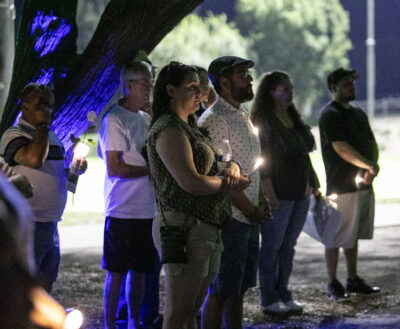Santa Clarita’s budget calls for tens of millions in mobility costs for L.A. County’s third-largest city
Santa Clarita City Manager Ken Striplin regularly talks about the importance of local road investment during his annual budget talks.
The city’s 2025-26 spending plan certainly reflects these priorities, with at least $60 million set aside for crosswalks, equipment, maintenance, signal, vehicles and, of course, street improvements and road construction.
Of the more than 20 projects being recommended for 2025-26 just in terms of “sustained public infrastructure, more than a handful are related to the roads.
The city’s state-of-the-art traffic systems come with a cost, and every year, Santa Clarita spends millions to keep its commuters moving.
“To enhance pedestrian safety at five intersections, $436,000 is being recommended,” Striplin said during an April budget discussion. “This project will install pedestrian video-detection camera systems and blank-out signs to warn motorists and pedestrian activity approaching the crosswalk.”
Those improvements are expected along Golden Valley Road, at Lost Canyon Road, Robert E. Lee and Centre Pointe parkways; they also will be made along Newhall Ranch Road at Santa Clarita Parkway and Millhouse Drive, according to city plans.
Another $200,000 is slated for backup battery systems at intersections citywide.
Additionally, nearly $577,000 is being recommended for design of the 2025-26 bridge preventative maintenance program, Striplin said, which is “to maintain integrity and address the maintenance needs” at 10 bridges citywide.
Keep it moving
And then there are the vehicles and their care:
Another $400,000 is intended to upgrade the lighting control system at the McBean Regional Transit Center. A little over a half-million dollars for three trucks, two pool vehicles, two Gators and a bucket truck in the vehicle-replacement program.
Another $760,000 to replace a 16-year-old stormwater Vactor truck, a vehicle that takes three years to order. It can clean a sewer main or one of more than 700 catch basins.
There’s $1 million to grow the GO! Santa Clarita micro-transit program, which provides an app-based on-demand ride-sharing service.
Also in terms of fleet replacement, there’s $9.3 million to replace 16 transit vehicles, which was $11.1 million last year.
But the heftiest price tag comes from the road itself.
Road projects
In addition to $600,000 just for concrete, the city of Santa Clarita has budgeted $17 million for the Annual Overlay and Slurry Seal program, which, as the name suggests, is a yearly treatment for a rotating list of the city’s roads, in order to keep them in good condition.
The city likens slurry seal to a maintenance treatment, which adds a coating of finely crushed aggregate, asphalt and water to extend a road’s life.
Overlay is a similar treatment but adds another surface layer to the road after grinding up the previous layer.
The city also has more than $3 million set aside for design and construction of improvements intended to increase capacity and pedestrian safety at the entrance to the Valencia mall.
A Valencia Town Center renovation has been discussed for years, particularly since Centennial Real Estate Corp. bought the property in 2023. In addition to a massive makeover, the area is expected to add more than 2,000 residential units.
But all of those items combined won’t touch the city’s most expensive project this year, a two-year, $60 million extension of Dockweiler Drive.
The extension of the road — a four-lane east-west arterial from Sierra Highway near Highway 14 through Placerita Canyon — is intended as a partnership between the city and The Master’s University, which is in Placerita Canyon and also would benefit from the project. The city’s end was estimated at close to $50 million, with TMU accountable for the project’s grading, according to city officials.







